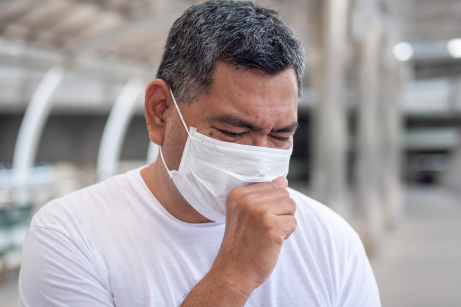Whooping Cough Is Surging in the U.S.: What You Need to Know
The United States is facing a sharp and deeply concerning resurgence of pertussis, better known as whooping cough, a vaccine-preventable illness that was once nearly eliminated thanks to robust public health efforts.
Published May 5, 2025

By Syra Madad, DHSc, MSc, MCP, CHEP, and Boghuma K. Titanji, MD PhD
To date in 2025, the Centers for Disease Control and Prevention (CDC) has reported over 8,000 cases of whooping cough, a more than two-fold increase from the same time last year. At the current rate, the nation could see up to 70,000 cases by year’s end, more than doubling last year’s total. If this trajectory continues, the United States may experience the highest number of infections since the introduction of the pertussis vaccine in 1948.
What Is Whooping Cough?
Whooping cough is a highly contagious respiratory illness caused by Bordetella pertussis. It spreads through respiratory droplets when an infected person coughs, sneezes, or breathes near others. Symptoms begin like a common cold, runny nose, low-grade fever, and mild cough but progress to violent coughing fits that can last for weeks. The characteristic “whoop” occurs as the patient gasps for air between spasms. In severe cases, the force of repeated coughing can lead to rib fractures, which may then result in lung collapse, or pneumothorax, a potentially life-threatening complication.
For infants and young children, pertussis can be life-threatening. Complications include pneumonia, seizures, encephalopathy, and even death. Health officials have reported three recent pediatric deaths linked to whooping cough, two infants in Louisiana and a child under 5 in Washington state who died in late 2024. Infants under one year of age face the highest risk of severe illness and death, as their immune systems are not yet fully developed, and this group consistently accounts for the highest rates of reported pertussis cases.
Why Are Cases Rising?
Several converging factors are driving this resurgence:
- Declining Vaccination Rates: In 2024, the CDC reported that less than 93% of kindergarteners were vaccinated against pertussis, falling from 95% in 2019.
- Vaccine Hesitancy and Misinformation: The rise in anti-vaccine sentiment has had a measurable impact on immunization rates. This includes increasing vaccine exemptions and a decline in timely childhood vaccinations. Social media disinformation, politicization of vaccines, and public figures promoting skepticism have all contributed to declining coverage, fueling the resurgence of pertussis.
- Waning Immunity: The acellular pertussis vaccine introduced in the 1990s was designed to reduce side effects like fever and injection site reactions. However, it is less durable than the older whole-cell vaccine, with immunity diminishing over time.
- Genetic Mutation of the Pathogen: Emerging evidence indicates that Bordetella pertussis is evolving in ways that may affect vaccine effectiveness. Studies from CDC surveillance and genetic sequencing are ongoing to understand the implications of these changes.
Treatment and Prevention
There is no treatment that effectively halts the hallmark coughing fits once they begin. The clinical manifestations of the disease are mediated by bacterial toxins which damage the delicate hairlike structures (cilia) on the cells that line our airways. The main function of cilia on respiratory tract cells, is to help with clearing mucus. Once the damage is done, administering antibiotics for treatment does not reverse it, nor does it speed up the recovery and repair of these cells. Antibiotics such as azithromycin are instead used to reduce transmission by eradicating the bacteria from the nasopharynx–prevention through timely vaccination remains the most effective tool.
The Vaccine: Safe, Effective, and Critically Underused
Pertussis vaccines have been in use for decades, are well studied, and significantly reduce the severity of illness and prevent hospitalizations and deaths. CDC-recommended vaccination and booster timing includes:
| Vaccine | Target Group | Doses | Booster Needed |
| DTaP | Infants and children | 2, 4, 6 months | Boosters at 15-18 months and 4-6 years |
| Tdap | Preteens and teens | Age 11 or 12 | Every 10 years |
| Tdap | Pregnant individuals | Each pregnancy (27–36 weeks) | Protects infant via maternal antibodies |
| Tdap | Adults | If not previously vaccinated | Every 10 years thereafter |
| Tdap | Adults in close contact with infants under 1 year | One dose | To reduce risk of transmission to vulnerable infants |
While no vaccine is perfect, vaccinated individuals are far less likely to experience life-threatening complications.
Stay Connected with Dr. Madad:
Instagram
Twitter/X
LinkedIn
Facebook
